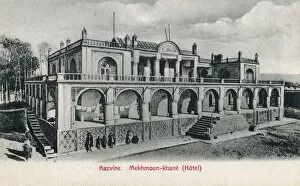Qazvin Collection
"Discover the Rich Cultural Heritage through Islamic Art" Qazvin, a city steeped in history and artistry
All Professionally Made to Order for Quick Shipping
"Discover the Rich Cultural Heritage through Islamic Art" Qazvin, a city steeped in history and artistry, holds within its boundaries a treasure trove of Islamic artifacts. One such artifact is an exquisite Islamic coin made from pure silver, showcasing the craftsmanship and monetary system prevalent during that era. Delving deeper into Qazvin's artistic heritage, we encounter mesmerizing paintings like "King Solomon and a Peri. " Created around 1570, this masterpiece depicts the mythical encounter between King Solomon and a peri (a supernatural being). The use of gouache with gold paint on paper adds an ethereal touch to this captivating artwork. Moving forward in time, we come across "Habib al-siyar, " painted between 1590-1600. This opaque watercolor and ink painting tells the tale of virtues embodied by beloved characters. The intricate details bring these virtuous figures to life on canvas. Intriguing narratives continue with "Mihr and Mushtari have blood taken from their arms. " Painted circa 1560-70 using opaque watercolor techniques, this artwork portrays two celestial beings undergoing an enigmatic ritual. The vibrant colors used in this piece evoke curiosity about their significance. "Bahram Gur and the princess in the Black Pavilion" transports us to another realm altogether. Executed with opaque watercolor, ink, and gold on paper around 1590; it narrates a romantic story intertwined with Persian folklore. Its vivid hues create an enchanting ambiance that captivates viewers' imaginations. Nature takes center stage as we witness "A man by the edge of a stream" painted between 1590-1600. Opaque watercolors mixed with ink and gold embellishments breathe life into this serene scene depicting tranquility amidst nature's beauty. The Khamsa (Quintet) by Amir Khusraw Dihlavi showcases his literary genius through ink and opaque watercolor.





















